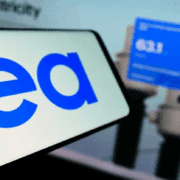⚠️ IMPORTANT LEGAL DISCLAIMER:
The information provided on this page is for general informational purposes only and does not constitute legal, financial, or investment advice. Oil and gas laws, mineral rights regulations, and royalty structures vary significantly by state and jurisdiction. While we strive to provide accurate and up-to-date information, no guarantee is made to that effect, and laws may have changed since publication.
You should consult with a licensed attorney specializing in oil and gas law in your jurisdiction, a qualified financial advisor, or other appropriate professionals before making any decisions based on this material. Neither the author nor the publisher assumes any liability for actions taken in reliance upon the information contained herein.
Joint Operating Agreements (JOAs) are foundational contracts in the oil, gas, and resource development sectors. They coordinate the responsibilities, liabilities, cost sharing, decision-making, and operational control among multiple parties in a project where no single company shoulders all investment or technical risk. Because development of subsurface resources often requires significant capital, specialized expertise, and risk sharing, a robust JOA clarifies how each party participates in exploration, drilling, production, and beyond.
In this guide, you will learn:
- What a JOA is and why it matters
- Typical structure and components
- Roles and responsibilities of operators and non-operators
- Cost allocation, accounting, and liability rules
- Decision protocols, voting, and governance
- Transfer, assignment, and exit mechanisms
- Default and dispute resolution provisions
- Risk management, insurance, and indemnities
- Best practices and pitfalls to avoid
- How JOAs differ in international and unconventional settings
Let’s explore how a well-drafted JOA helps align interests while limiting exposure for parties in complex resource ventures.
What Is a Joint Operating Agreement and Why Use It
A Joint Operating Agreement (JOA) is a contract among multiple parties who share rights in a subsurface lease or concession area. Under a JOA, these parties agree to pool their resources—with one designated as the operator—to execute exploration, development, and production operations. The JOA allocates costs, duties, liabilities, profit sharing, and decision authority.
The rationale is simple: resource development is capital-intensive, technically demanding, and high-risk. Not all parties have the expertise or appetite to act as operator, yet they still wish to participate and benefit. Instead of forming a full joint venture or partnership, a JOA lets parties cooperate under a contractual regime without necessarily creating a separate entity.
By clearly defining operational rules, obligations, contingencies, and financial mechanics, a JOA reduces uncertainty, avoids conflicts, and ensures transparency among the operator and non-operators. In many jurisdictions and industries—especially upstream oil & gas—JOAs are the industry standard contract form. The American Association of Petroleum Landmen (AAPL) has long provided model JOAs.
Key Objectives and Benefits of a JOA
A well-crafted JOA delivers multiple benefits:
- Clarity of roles and boundaries: It defines who is the operator, who are non-operators, and what rights and duties each party has.
- Risk allocation and cost sharing: It establishes how each party contributes to capital, operating, and abandonment costs, and how losses are borne.
- Governance and decision mechanisms: It sets rules for voting, consent, and approval thresholds for different categories of operations.
- Control over operational discretion: The operator is given the authority to execute day-to-day operations within defined limits, while non-operators retain oversight through audits, reporting, and consent rights.
- Transferability and exit procedures: It provides rules for how interests may be assigned, farmed out, or relinquished.
- Dispute and default management: It lays out remedies, resolution mechanisms, and default consequences.
- Insurance, indemnities, and liability mitigation: It protects parties from certain exposures via insurance obligations and indemnification clauses.
- Predictability and legal enforceability: A solid JOA reduces ambiguity and potential litigation by making responsibilities explicit.
Because resource projects often span decades and face changing economic, regulatory, and operational risks, a JOA ensures enduring governance clarity and reduces friction among partners.
Common Types and Variations of JOA Structures
JOAs come in many forms depending on the region, resource, and contractual regime. Some common variations include:
- Model or form JOAs: Standard industry templates (for example, the AAPL JOA in the U.S.) serve as starting points and are frequently customized to local law.
- License or concession regime JOAs: In many international jurisdictions, JOAs are executed within broader concession, license, or production sharing contracts. Parties must ensure consistency with upstream contract terms.
- Exclusive operations vs joint operations: Some JOAs distinguish “joint operations” (projects all parties share) from “exclusive operations” (optional side projects where a consenting party carries out work alone).
- Full‐economic interest JOAs: Each party holds a proportional share of production, costs, and revenues.
- Barrel split or carried interest structures: One party might carry costs for another (e.g. a junior partner), subject to earning interest back under defined terms.
- Tiered participation JOAs: Interests or burdens may shift over time based on performance milestones or payout events.
- Hybrid JOAs: Incorporating partnership attributes or joint venture aspects, or integrating corporate governance in a joint venture structure.
The exact structure depends on negotiation leverage, regulatory environment, financial constraints, and technical complexity.
Essential Components and Provisions of a JOA
A robust JOA contains numerous interlocking clauses. Below are the principal elements a user should expect:
Definitions and Interpretation
A JOA must begin with precise definitions—contract area, operations, capital expenditures, abandonment, default, etc. Ambiguities here lead to disputes later. Interpretation rules (e.g. favoring non-operators or requiring consent thresholds) may be included.
Designation and Duties of the Operator
One party is appointed as the operator (or drilling contractor in some contexts). The operator’s duties often include:
- Planning and executing operations
- Securing permits, regulatory compliance, environmental approvals
- Hiring contractors, supervising work, maintaining safety
- Reporting to non-operators and maintaining books
- Acting in good faith and with reasonable care, sometimes with fiduciary or implied duties
The JOA delineates the scope of the operator’s discretion and the limits (e.g. cost caps, prior approvals). Non-operators often retain oversight rights such as step-in rights, audit rights, or the ability to challenge costs.
Joint and Exclusive Operations
- Joint operations: Activities undertaken for the benefit of all parties within the contract area (e.g. drilling, fracturing, production). Costs and benefits are shared proportionally.
- Exclusive operations: Activities initiated by one party alone, under certain conditions. The JOA specifies whether other parties have rights to join, the cost burden, and any preferential rights to purchase.
Clear boundaries between these categories avoid duplication of work and disputes.
Cost Recovery, Accounting Procedure, and Liens
The JOA will include a detailed accounting procedure or exhibit that governs how expenditures, credits, cost reimbursements, and overruns are handled. Key issues:
- How costs are charged to the “joint account”
- How overhead, supervision, and shared facilities are allocated
- How credits (e.g. tariff credits, salvage, gas balancing) are handled
- Recoupment provisions (how costs are recovered over time)
- Lien or security rights: The operator may be granted a lien over non-operators’ share of production or assets to secure unpaid costs.
These provisions require careful drafting to protect operator cash flow, while assuring non-operators that costs are justifiable.
Voting, Consent, and Governance Mechanisms
Not all operations should be handled unilaterally by the operator. The JOA should define categories of approval:
- Routine operations: Within budgeted scope, executed by operator without further consent
- Nonroutine or capital operations: Such as recompletions, side-track wells, or high cost decisions—requiring consent of a threshold (e.g. supermajority) of non-operators
- Major decisions: Abandonment, structural changes, elections, or termination may require unanimous or high threshold approval.
Voting rights are often based on interest percentages, but minority protections (veto rights, blocking rights) may be negotiated. Governance mechanisms such as meetings, notices, voting windows, and quorum rules must be specified clearly.
Transfer, Assignment, Relinquishment, and Farmout
The JOA must set rules for:
- Assignment or sale of a party’s interest
- Conditions precedent, approvals, or right of first refusal
- Whether assignee must assume obligations
- Mechanisms for relinquishment or conversion of interest
- Farmout arrangements where a party “fars out” some of its interest in exchange for carrying costs
These clauses maintain operational continuity and ensure that new parties meet obligations.
Default, Remedies, and Penalties
The JOA should define what constitutes default (e.g. failure to pay, failure to participate, bankruptcy). Remedies may include:
- Suspension or forfeiture of interest
- Imposition of penalties or interest
- Operator’s right to recover costs from defaulting party
- Step-in or takeover rights
- Sale of defaulting party’s interests or participation
- Indemnities and legal costs
Clear default regimes deter non-performance and protect parties’ rights.
Dispute Resolution, Arbitration, and Governing Law
Given the stakes, JOAs should include dispute resolution mechanisms:
- Escalation procedures (conference, mediation)
- Choice of forum (arbitration versus courts)
- Governing law and jurisdiction
- Place of arbitration
- Appointment of arbitrators, confidentiality provisions
These mechanisms are essential in long-lived projects that may span legal, technical, and commercial disagreements.
Insurance, Indemnification, and Liability
The operator is typically required to procure insurance (liability, property, environmental, workers’ compensation). The JOA defines:
- Type and minimum coverage
- Cost allocation of premiums
- Indemnities for third-party claims or operator negligence
- Limitations or caps on liability
These provisions help mitigate catastrophic exposures and provide comfort to all parties.
Abandonment, Decommissioning, and Remediation
At the end of operations, wells and infrastructure must be plugged, decommissioned, or remediated. The JOA should address:
- Timing and responsibility for abandonment
- Cost allocation or accrual of abandonment liabilities
- Obligations for environmental remediation or site restoration
- Transfer of abandonment liabilities to successors or assignees
In many jurisdictions these obligations are regulated, so compliance provisions must be integrated.
Reporting, Audit, and Compliance
Transparency is vital. The JOA should require:
- Regular operational, financial, and technical reporting
- Access rights for non-operators to audit operator books
- Compliance with laws, permits, environmental regulations
- Notification provisions for incidents, cost overruns, or disputes
These safeguards build trust and allow oversight.
Roles and Duties: Operator vs Non-Operators
The dynamic between operator and non-operators is delicate and must be balanced through JOA terms.
The Operator’s Role and Challenges
The operator is the workhorse: managing day-to-day operations, coordinating contractors, ensuring regulatory compliance, and bearing the risk of cost overruns or operational failures. Because the operator has more control, it also deserves protections: priority liens, cost recovery security, and clear indemnities.
However, an operator must exercise care and fairness. If it abuses discretion or ignores oversight rights of non-operators, disputes can escalate. Duties such as acting in good faith, keeping proper records, and providing timely notices are critical. Some JOAs impose fiduciary or implied obligations on the operator to ensure imbalance does not lead to abuse.
Non-Operators’ Rights and Protections
Non-operators invest capital but do not manage operations. Their primary concerns are:
- Having visibility into costs, performance, risks
- Being protected from operator overreach
- Having audit rights and cost control
- Maintaining the ability to consent or veto in critical areas
- Securing lien rights in case of nonpayment by operator or defaulting non-operators
A well-balanced JOA gives non-operators meaningful oversight without undermining operational efficiency.
Decision Making, Voting, and Governance in Practice
Effective governance is critical to prevent deadlock and ensure smooth operations. Some practical design elements:
- Classifying decisions: Distinguish between routine, mid-level, and major decisions, each with different thresholds
- Supermajority or veto rights: For high value or high risk decisions, supermajority or unanimous consent may be required
- Blocking carve-outs: Giving minority parties the right to block certain detrimental actions
- Deadlock resolution: Tie-breakers, third-party decision, or escalation mechanisms
- Meetings and notice periods: Defining how and when parties meet, vote, and respond
- Electronic voting and proxies: In modern JOAs, digital mechanisms permit faster decision-making
A JOA’s governance system must balance agility with protection of minority interests.
Cost Control, Accounting, and Lien Mechanics
Managing costs is at the heart of the success or failure of a JOA. Some of the key levers:
Detailed Accounting Exhibits
Exhibits that define cost categories, methodologies, overhead allocation, depreciation, chargebacks, salvage, and credits. The more explicit and detailed, the fewer ambiguities later.
Overrun and Budget Control
Mechanisms to limit cost overruns (e.g. operator must obtain consent before certain thresholds). Also, processes for notifying and approving budget increases.
Cost Recoupment and Carrying
If a party (e.g. non-operator) does not timely pay, the JOA should specify how the operator recovers cost: possibly deducting from production revenues, charging interest, or invoking lien rights.
Lien or Security Interest
Often, operators obtain a lien over the non-operators’ share of production, equipment, or accounts to secure cost obligations. This ensures that operator can recover costs and that non-operators have a financial incentive to stay current.
Audit and Reconciliation
Non-operators should have the right to audit operator costs. Discrepancies should be resolved via defined processes, possibly with third-party review or arbitration.
Default, Remedies, and Exit Mechanisms
Even in well-run projects, defaults and exits must be anticipated.
Defining Default Events
Clear default triggers—nonpayment, failure to perform, bankruptcy, breach of covenants, or misrepresentation.
Cure Periods and Notice Requirements
Allowing defaulting parties opportunities to cure within specified timelines, after notice.
Remedies Available
- Operator rights to suspend operations
- Withholding of production or proceeds
- Charging penalties or interest
- Forfeiture or reallocation of interest
- Sale of defaulting party’s share
- Step-in rights for non-operators to take over operator role if necessary
Exit & Assignment Protocols
Rules for party withdrawal, sale, or assignment of interest, requiring assignee to assume obligations and accept the JOA burden.
Relinquishment or Conversion Rights
When a non-operator declines participation in an operation, the JOA may permit relinquishment of its interest, or conversion to a carried or reduced interest.
Managing Risks Through Insurance, Indemnities, and Liabilities
Resource operations carry risk. A JOA protects parties via:
Mandatory Insurance Coverages
Requiring the operator to maintain insurance (e.g. general liability, pollution, property, workers compensation) at agreed levels, with premiums charged to the joint account as appropriate.
Indemnity Provisions
The operator or parties indemnify each other (within agreed limits) for third-party claims, negligence, or breach. These clauses often include allocation of legal costs.
Limitation of Liability, Caps, and Exclusions
Negotiated caps on liability, exclusion of consequential damages, and carve-outs for gross negligence or willful misconduct.
Environmental and Regulatory Risk Provisions
Compliance obligations, penalty clauses, and clauses to address fines, leaks, spills, and regulatory changes should be addressed.
Special Considerations in International or Unconventional Settings
JOAs in international or unconventional (e.g. shale, deepwater, unconventional gas) settings require extra care:
- Concession or production sharing framework alignment: Ensure JOA terms do not conflict with host country contracts.
- Local law, currency, and tax implications: Local regulations may impose constraints on assignment, currency conversion, or cross-border payments.
- Political risk, expropriation, and contract stability: Include stabilization clauses, force majeure, and investor protections.
- Unconventional operations: More complex cost structures, technology risks, and regulatory oversight demand more detailed accounting, monitoring, and approval mechanisms.
- Decommissioning and abandonment in remote or frontier areas: Higher uncertainty and cost—JOA must anticipate contingencies.
Adaptations to standard JOA forms are common in these settings, and best practice is to engage local legal, technical, and regulatory advisors.
Common Pitfalls and How to Avoid Them
In practice, many disputes arise from ambiguous clauses or failure to think ahead. Common pitfalls include:
- Vague definitions and ambiguous drafting — leading to interpretation battles
- Insufficient governance structure — decision deadlocks or paralysis
- Lack of audit or oversight rights — cost overruns go unchecked
- Weak default or remedies provisions — parties unwilling to enforce obligations
- Inadequate insurance or indemnity clauses — leaving parties exposed
- Poor exit or assignment rules — complicating transfer or sale of interests
- Ignoring regulatory or tax implications — resulting in noncompliance
- Failure to adapt to changing conditions — inability to revise JOAs when new risks emerge
To mitigate these risks, parties should:
- Use a well-tested model JOA as baseline
- Invest in detailed drafting and scenario planning
- Engage experienced legal and technical advisors
- Include flexibility for amendment or renegotiation
- Build in audit, oversight, and dispute mechanisms
- Stress test JOA clauses under extreme scenarios
Implementation and Lifecycle Management of a JOA
A JOA is not a static document. To ensure usefulness over time, parties should:
- Review and update JOA terms periodically (e.g. after new wells, regulatory changes, cost escalation)
- Monitor compliance, cost performance, and reporting
- Conduct periodic audits and reconciliations
- Address disputes promptly using contractual mechanisms
- Prepare for decommissioning at the project’s end
- Facilitate smooth assignments or exits when necessary
Lifecycle management ensures the JOA remains a living, effective governance tool.
Illustrative Case Example
To ground these principles, consider a hypothetical oil and gas exploration block where three companies hold interests. Company A is the technical lead and becomes operator. The JOA is negotiated to:
- Define cost sharing in proportion to interest
- Require consent of 60 % in value for side-track operations
- Grant the operator a lien over production for unpaid costs
- Provide audit rights to non-operators
- Set default terms and step-in rights
- Mandate insurance, indemnities, and regulatory compliance
During operations, cost overruns occur. The operator must seek approval for increased budget. A non-operator disputes certain cost items. Under the JOA audit right, the operator must produce supporting invoices and allow independent review. Dispute is escalated to arbitration as per the contract. At end of life, the JOA dictates abandonment cost sharing and remediation obligations.
This illustration demonstrates how the JOA governs real operational, financial, and dispute situations.
A Joint Operating Agreement is the legal and operational backbone of collaborative resource development. When properly drafted, it aligns interests, allocates risk, ensures oversight, and provides remedies for conflicts. But drafting a JOA requires deep insight into technical operations, financial mechanics, legal risk, and regulatory frameworks.
To maximize value and minimize conflict, parties should adopt model forms as foundations, but customize them carefully. They should pay special attention to definitions, cost accounting, governance design, audit rights, default mechanisms, and exit provisions. In international or unconventional projects, adapting to local law, regulatory risk, and technology dynamics is crucial.
In summary, JOAs are not merely templates—they are strategic contracts that govern decades of operational, financial, and legal interactions. A robust, carefully negotiated JOA offers the stability, clarity, and accountability needed for successful joint development of natural resources.
Do you have any questions related to Joint Operating Agreements? Feel free to contact us here.
Remember: This information is for educational purposes only. Consult qualified professionals for advice specific to your situation and jurisdiction.










